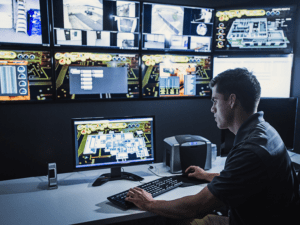This audio was created using Microsoft Azure Speech Services
The rise of crime and violence is hospitals is staggering. 91% of all reported crimes in US Hospitals in 2010 had doubled since the last survey in 2004 by the International Association for Healthcare Security & Safety (IAHSS) 2010 Crime and Security Trends Survey. Doubled!
In just the few last months there were three new reports that made national news… a gunman opened fire at Renown Regional Medical Center, a Reno hospital, killing 2, including himself; in Longview, Texas at Good Shepard Medical Center’s ambulatory surgery center, a man stabbed four people, killing a nurse and a visitor. At Children’s Hospital of Wisconsin in the neonatal unit a fatality occurred initiated by a domestic dispute.
Healthcare has higher risk than many other types of facilities for a number of reasons:
- Care is provided 24/7 and we are required to be publically accessible.
- A predominate percentage of our staff are female and are the most likely victims of workplace violence.
- Drugs are used and stored in the facility.
- Money is handled throughout many facilities.
- The types of facilities we manage are changing making our challenges greater as we move into an outpatient environment physically distant from our hospital centric campuses.
We in healthcare have a growing need for security and yet budgets are getting cut left and right.
How do we, in the industry, keep our patients, our visitors, our staff, and our assets safe? The Joint Commission responded in 2010 when it published the Sentenial Event Alert #45 regarding violence in the healthcare setting, which calls for each healthcare facility to have a documented workplace violence program and process. The key is to balance infrastructure systems (technology) and staff to enable the organization to deliver patient care services in a reasonably safe and secure environment.
“Hospitals should meet security challenges with Integrated Security and Facility Solutions” writes IHSSF President Steve Nibbelink, CHPA in a White Paper on Security Challenge in Healthcare he authored to help advance the healthcare security industry.
Access control is particularly critical in the emergency room, maternity areas, pediatric areas, the ICU, pharmacy, server and data center rooms as well as the parking garages and platforms. Video surveillance with megapixel camera technology has ushered in a new era for the industry along with wireless, integrated locksets and web based solutions with connectivity to the hospital’s network.
What are we seeing in the industry?
Innovations in the healthcare security industry has brought these new technologies both for new systems as well as retrofits. In an article in Health Facilities Management Magazine Security Watch (Page 31) Shawn Hanrahan talks about how the future is now, where we are able to not just integrate within traditional security systems components, but also to the building management, nurse call, mechanical infrastructure, HVAC system, data center management systems, and electrical distribution systems to reduce energy consumption, to improve staff productivity and improve security.
How are you integrating your security with other systems to be more effective? Let us know in the comments.


Conversation
Estelle Schweizer
11 years ago
Great article Stacy! And very timely with a slew of recent security incidents in hospitals. A new article in HFM reinforces the point by stating wireless security integration and RTLS are the future of hospital security.